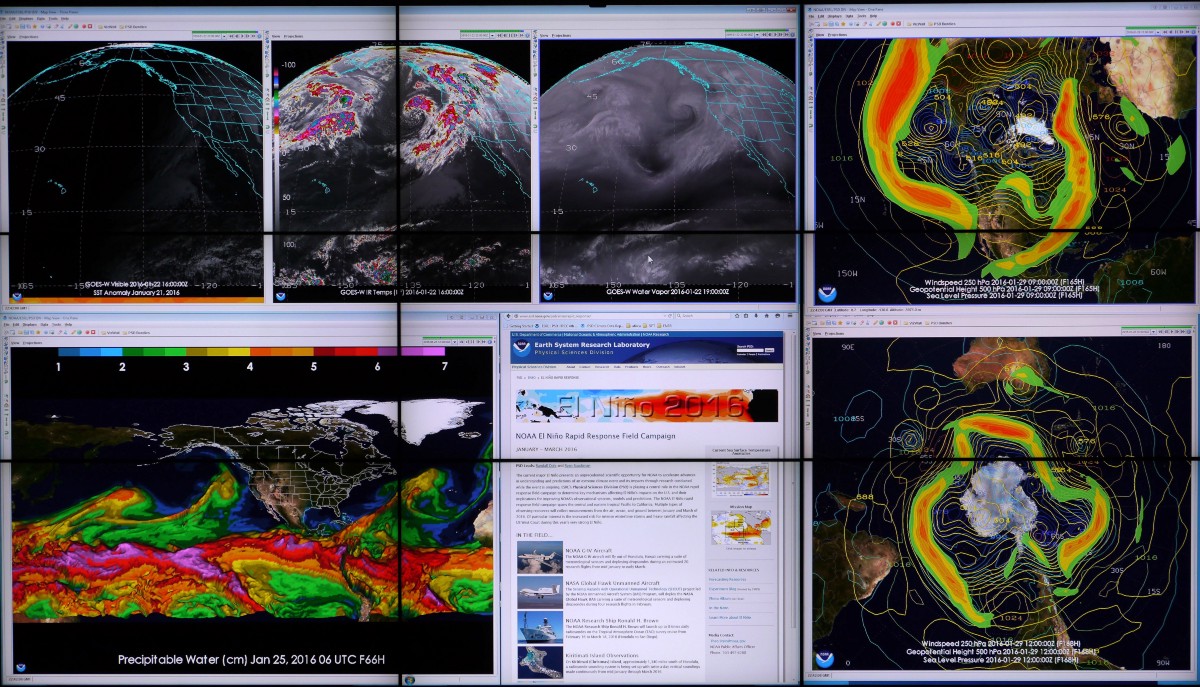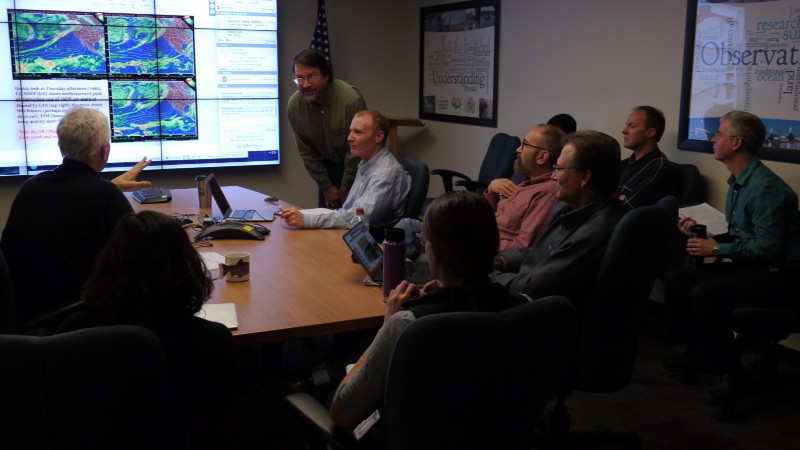
BOULDER, COLORADO — Nine flat screens fill a wall, each one in turn filled with a perpetual motion of cloud, wind, and storm animations. Some of these images come from observations collected via satellites. Others come from models used to predict the weather over the next several days and weeks.
Welcome to our “Weather War Room” located in the bowels of the NOAA Earth System Research Laboratory in Boulder, Colorado. It is a fish-bowl of a room, encircled with windows allowing curiosity seekers to ogle the spectacle within. Welcome to our Weather War Room. Here, each day from 9:00 am to noon, I’m part of a group of atmospheric scientists — young and old, junior and senior — that, energy permitting and nerves not snapping, will be stationed here until March. Each scientist brings his or her own unique insights and knowledge into the Weather War Room and each will try to make some sense of the swirl of clouds and winds.

A forecast briefing — Hoerling is at far left.
For what purpose? Not to debate practical or esoteric theories of climate — that luxury of academics must await another day, maybe even another month. No, our sole purpose is to guide NOAA’s daily flight mission into the “teeth of El Niño.” To do this, we’re assessing, interpreting, and debating the complexities of today’s weather over the tropical Pacific Ocean.
Our mission, which we have all volunteered for, with excitement and the expectation of new knowledge, is to determine where best to guide a NOAA Gulfstream-IV aircraft (and eventually other assets). Those flights will bring back new measurements of winds, clouds, and moisture that might hold clues to how El Niño affects our weather, and to see whether our models can better forecast its impact.
It’s all just beginning. The first new data are arriving in the Weather War Room as I write, and the G-IV is making its first traverse into the “teeth of El Niño.”
